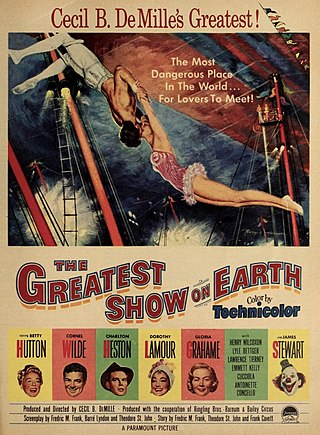
The Greatest Show on Earth is a 1952 American drama film produced and directed by Cecil B. DeMille, shot in Technicolor and released by Paramount Pictures. Set in the Ringling Bros. and Barnum & Bailey Circus, the film stars Betty Hutton and Cornel Wilde as trapeze artists competing for the center ring and Charlton Heston as the circus manager. James Stewart also stars as a mysterious clown who never removes his makeup, and Dorothy Lamour and Gloria Grahame also play supporting roles.
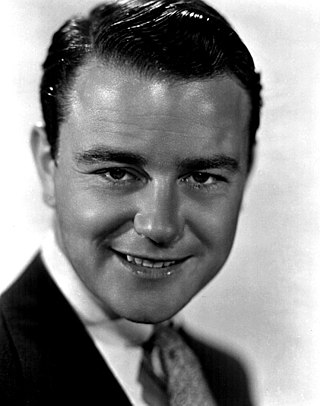
Lewis Frederick Ayres III was an American actor whose film and television career spanned 65 years. He is best known for starring as German soldier Paul Bäumer in the film All Quiet on the Western Front (1930) and for playing Dr. Kildare in nine films. He was nominated for an Academy Award for Best Actor for his performance in Johnny Belinda (1948).
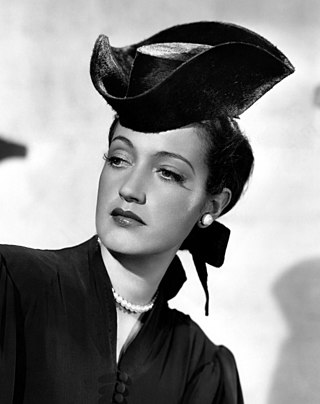
Dorothy Lamour was an American actress and singer. She is best remembered for having appeared in the Road to... movies, a series of successful comedies starring Bing Crosby and Bob Hope.

Evelyn Brent was an American film and stage actress.

John Howard was an American actor. He is best remembered for his roles in the films Lost Horizon (1937) and The Philadelphia Story (1940).
Billy Lee was a child actor who appeared in many films from the mid-1930s through the early 1940s. He is probably best remembered for his performance in The Biscuit Eater.
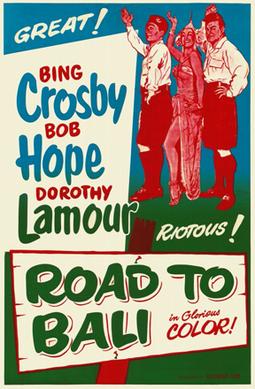
Road to Bali is a 1952 American comedy film directed by Hal Walker and starring Bing Crosby, Bob Hope, and Dorothy Lamour. Released by Paramount Pictures on November 19, 1952, the film is the sixth of the seven Road to … movies. It was the only entry in the series filmed in Technicolor and was the first to feature surprise cameo appearances from other well-known stars of the day.
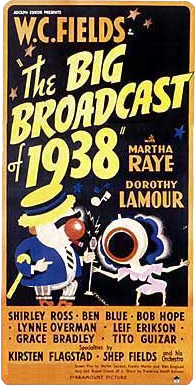
The Big Broadcast of 1938 is a Paramount Pictures musical comedy film starring W. C. Fields and featuring Bob Hope. Directed by Mitchell Leisen, the film is the last in a series of Big Broadcast movies that were variety show anthologies. This film featured the debut of Hope's signature song, "Thanks for the Memory" by Ralph Rainger.

High, Wide and Handsome is a 1937 American musical western film starring Irene Dunne, Randolph Scott, Alan Hale Sr., Charles Bickford and Dorothy Lamour. The film was directed by Rouben Mamoulian and written by Oscar Hammerstein II and George O'Neil, with lyrics by Hammerstein and music by Jerome Kern. It was released by Paramount Pictures.

Union Pacific is a 1939 American Western drama directed by Cecil B. DeMille and starring Barbara Stanwyck, Joel McCrea and Robert Preston. Based on the 1936 novel Trouble Shooter by Western fiction author Ernest Haycox, the film is about the building of the eponymous railroad across the American West. Haycox based his novel upon the experiences of civil engineer Charles H. Sharman, who worked on the railroad from its start in Omaha, Nebraska in 1866 until the golden spike ceremony on May 10, 1869 to commemorate the joining of the Central Pacific and Union Pacific railroads at Promontory Summit, Utah Territory. The film recreates the event using the same 1869 golden spike, on loan from Stanford University.

The Plainsman is a 1936 American Western film directed by Cecil B. DeMille and starring Gary Cooper and Jean Arthur. The film presents a highly fictionalized account of the adventures and relationships between Wild Bill Hickok, Calamity Jane, Buffalo Bill Cody, and General George Custer, with a gun-runner named Lattimer as the main villain. The film is notorious for mixing timelines and even has an opening scene with Abraham Lincoln setting the stage for Hickok's adventures. Anthony Quinn has an early acting role as an Indian. A remake using the same title was released in 1966.

Star Spangled Rhythm is a 1942 American all-star cast musical film made by Paramount Pictures during World War II as a morale booster. Many of the Hollywood studios produced such films during the war, generally musicals, frequently with flimsy storylines, and with the specific intent of entertaining the troops overseas and civilians back home and to encourage fundraising – as well as to show the studios' patriotism. This film was also the first released by Paramount to be shown for 8 weeks.
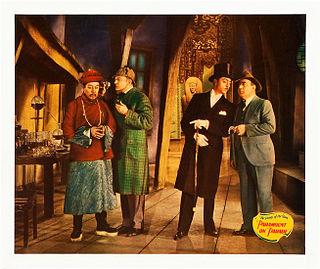
Paramount on Parade is a 1930 all-star American pre-Code revue released by Paramount Pictures, directed by several directors including Edmund Goulding, Dorothy Arzner, Ernst Lubitsch, Rowland V. Lee, A. Edward Sutherland, Lothar Mendes, Otto Brower, Edwin H. Knopf, Frank Tuttle, and Victor Schertzinger—all supervised by the production supervisor, singer, actress, and songwriter Elsie Janis.
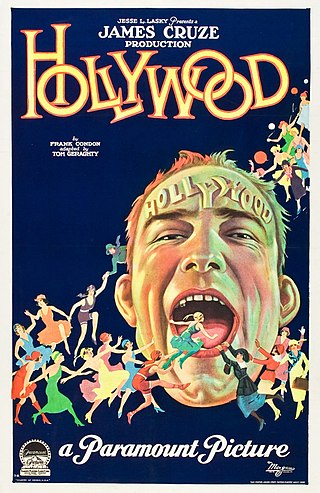
Hollywood is a 1923 American silent comedy film directed by James Cruze, co-written by Frank Condon and Thomas J. Geraghty, and released by Paramount Pictures. The film is a lengthier feature follow-up to Paramount's own short film exposé of itself, A Trip to Paramountown from 1922.

Interference is a 1928 American pre-Code drama film directed by Lothar Mendes, as Paramount Pictures' first feature-length all-talking motion picture. It stars Clive Brook, William Powell, Evelyn Brent, and Doris Kenyon, all making their sound film debuts. In England, when a first husband turns out not to be dead, blackmail leads to murder.
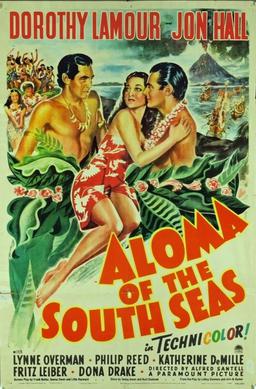
Aloma of the South Seas is a 1941 American romantic adventure drama film directed by Alfred Santell and starring Dorothy Lamour and Jon Hall. The film was shot in Technicolor and distributed by Paramount Pictures.

Touchdown, Army retitled Generals of Tomorrow in the UK is a 1938 American comedy film directed by Kurt Neumann, written by Lloyd Corrigan and Erwin S. Gelsey, and starring John Howard, Mary Carlisle, Robert Cummings, William Frawley, Owen Davis Jr., and Benny Baker. It was released on October 7, 1938, by Paramount Pictures.

Helen Margarite Burgess was an American film and stage actress. Discovered by Cecil B. DeMille, she began her acting career in 1936 at age nineteen, playing Louisa Cody in DeMille's Western biopic The Plainsman. She would appear in four films as a contract player for Paramount Pictures before dying at age twenty from pneumonia.

Lola Lane was an American actress and one of the Lane Sisters with her sisters Leota, Rosemary, and Priscilla Lane. She appeared on Broadway and in films from the 1920s to 1940s.
Everett Douglas (1902–1967) was an American film editor. He was under contract to Paramount Pictures for many years. At the end of his career he edited numerous episodes of the western television series Bonanza.


















